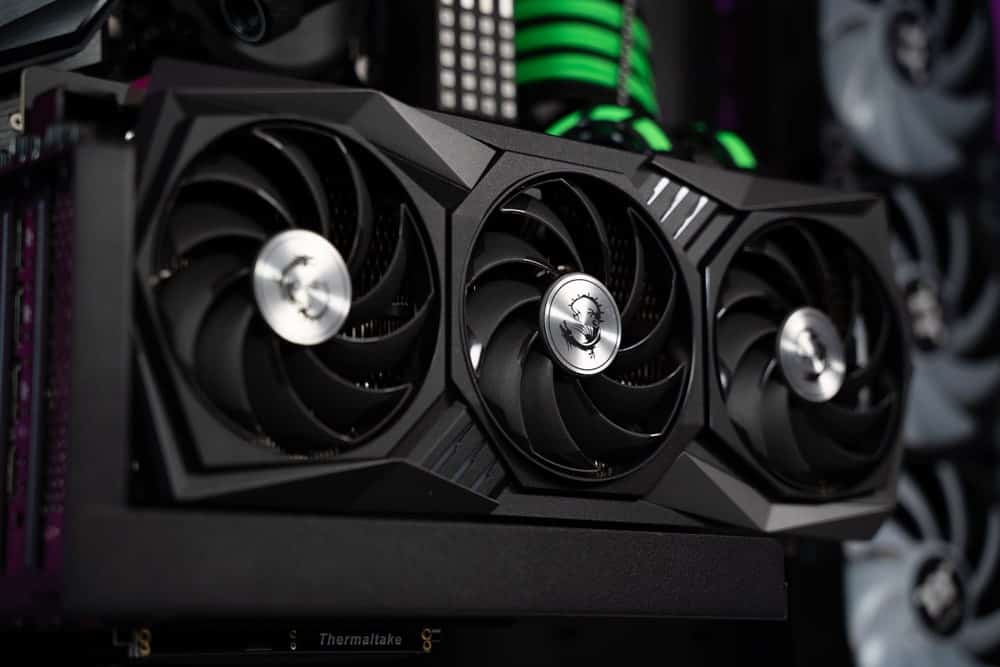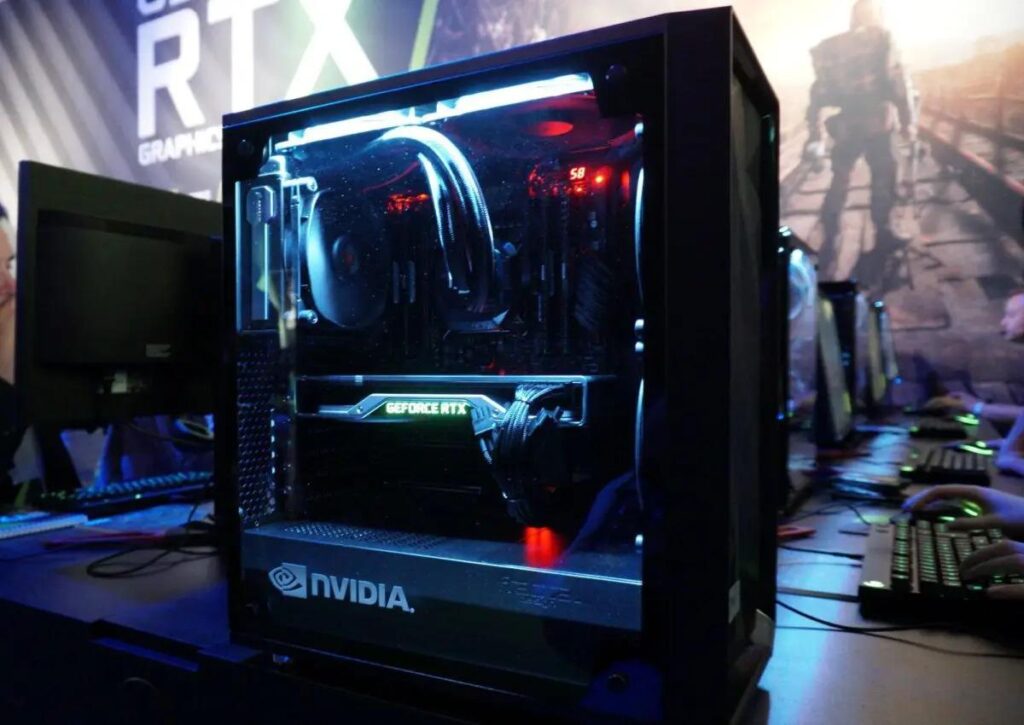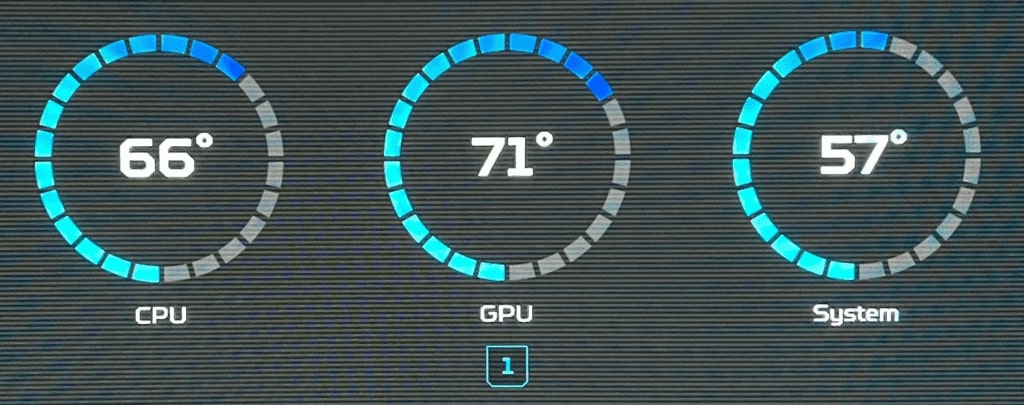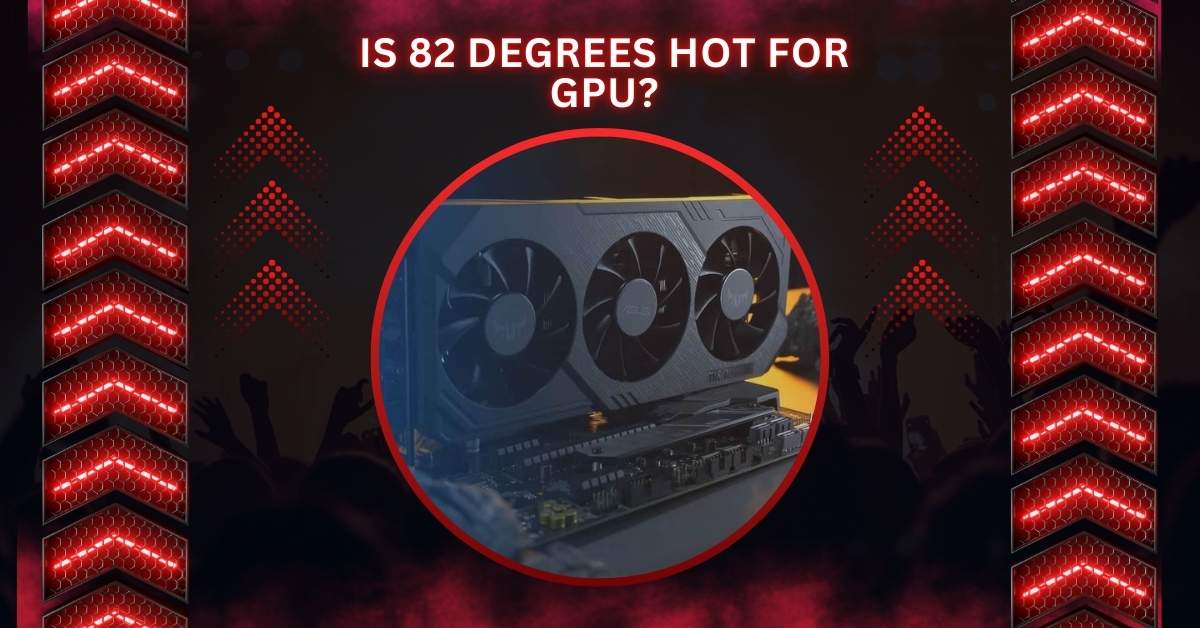Modern GPUs are designed to handle high temperatures, but there is still a range of “safe” temperatures.
An 82°C GPU temperature is generally safe and within normal limits for modern graphics cards, especially during intense tasks like gaming. While warm, it’s not alarming, as temperatures up to 83°C are acceptable for high-performance systems.
Let’s explore what to expect at 82°C and what you can do to optimize your GPU’s performance.
What is the Ideal GPU Temperature Range?
The ideal temperature range for GPUs while gaming or under heavy load usually falls between 60°C and 85 85°C. Anything within this range is generally safe, but lower temperatures are better for long-term performance.
At idle, your GPU should be much cooler, usually between 30°C and 40°C. Keeping your GPU below 85°C ensures it functions efficiently without the risk of overheating or thermal throttling.
Is 82°C Hot For a GPU While Gaming?

For most modern GPUs, including high-end models from NVIDIA and AMD, 82°C is within the safe range, especially under heavy loads like gaming.
Many GPUs are designed to handle temperatures up to 90-95°C before throttling occurs. However, maintaining your GPU at 82°C for extended periods can impact its longevity, so monitoring and optimizing cooling can be beneficial.
Also Read: Why Is Valorant Using So Much GPU – Key Reasons And Fixes!
Is 82 Degrees Hot for a Laptop GPU?
Laptop GPUs typically run hotter due to compact designs and less efficient cooling systems. While 82°C is still within safe limits, it is considered warm for a laptop GPU. A cooling pad or improving airflow can help reduce this temperature and protect your laptop from damage.
How Does Overclocking Affect GPU Temperatures?
Overclocking pushes your GPU to operate at higher speeds, generating more heat. While overclocking can provide performance gains, it can cause your GPU temperature to climb above 82°C, potentially leading to overheating if not appropriately managed. When overclocking, it’s essential to ensure your cooling system can handle the extra heat to avoid damage.
What Happens When a GPU Gets Too Hot?
If your GPU frequently runs above 90°C, the risk of thermal throttling increases. This means the GPU will slow down to prevent overheating, leading to a noticeable drop in performance during gaming or other intensive tasks.
Prolonged exposure to high temperatures can also degrade components, reducing the overall lifespan of your GPU.
Tips for Keeping Your GPU Cool
To avoid running your GPU at 82°C or higher, you can implement several cooling solutions:
- Improving airflow: Ensure your PC case has enough fans and proper cable management to allow good airflow.
- Reapply thermal paste: Over time, thermal paste can dry out, which reduces its effectiveness. Reapplying thermal paste can significantly lower your GPU temperatures.
- Regular cleaning: Dust buildup on fans and heat sinks can block airflow, leading to higher temperatures. Regularly cleaning these components helps maintain optimal cooling.
What Are the Risks of Running a GPU at 82°C Constantly?
Running a GPU consistently at 82°C can shorten its lifespan due to increased component wear. Although 82°C is not dangerously hot, it’s close to the threshold where thermal throttling can occur.
Even if your GPU operates safely now, prolonged exposure to high temperatures can slowly degrade its performance.
Also Read: GPU Junction Temperature – How It Affects Performance – 2024
Is 82 Degrees Celsius Safe for Extended Gaming Sessions?

Yes, 82°C is typically safe for extended gaming sessions, as most modern GPUs can tolerate these temperatures. However, monitoring your GPU’s temperature is crucial during long sessions.
If it consistently stays at or above this temperature, reducing the GPU’s workload by lowering in-game graphics settings or investing in better cooling solutionsis a good idea.
How Can You Monitor GPU Temperatures?
Several tools are available to monitor your GPU temperature:
- NVIDIA Control Panel: The Control Panel offers built-in monitoring features for NVIDIA GPUs.
- AMD Radeon Software: Similarly, AMD’s software includes temperature monitoring options.
- Third-party software: Tools like MSI Afterburner and HWMonitor provide real-time temperature tracking and fan control, allowing you to optimize your cooling setup based on your GPU’s needs.
Is 82 degrees Celsius hot?
82°C is warm for a GPU, but it’s usually safe under heavy use like gaming. However, good airflow and cooling are important to keep it from getting even hotter, which could impact performance.
Must Read: Are GPU Fans Intake Or Exhaust? – Optimize Your PC Airflow!
Is 80-83degrees ok for a GPU while playing?
80-83°C is safe for most GPUs while gaming, but it’s warmer. Ensure your system has proper cooling to avoid going higher, as it could shorten the GPU’s lifespan over time.
Is-80-86-degrees-of-GPU-hot-while-gaming
80-86°C is high but still within safe gaming limits. It’s best to check your GPU’s cooling system to prevent further heating, which could affect your gaming performance or reduce its life.
How To Lower Your GPU Temperature
1. Disable Any Overclocking You May Be Using
Overclocking makes your GPU run hotter. Disabling overclocking helps lower temperatures by reducing the strain on your GPU. It’s a quick fix to prevent overheating and maintain performance without extra cooling.
2. Set A Higher GPU Fan Curve
Increasing your fan curve makes the GPU fans spin faster at lower temperatures. This improves cooling and helps keep the GPU from overheating, especially during gaming or heavy usage, ensuring smoother performance.
3. Undervolt Your Graphics Card or Set A Low-Power Mode
Undervolting lowers the power your GPU uses, which reduces heat. Setting a low-power mode can also help keep the GPU cool by minimizing its workload without affecting performance too much during everyday tasks.
4. Set An FPS Cap
Setting an FPS cap limits the frames your GPU produces, reducing the workload. This leads to lower temperatures, as the GPU won’t be working as hard, which can prevent overheating during gaming sessions.
5. Use Compressed Air To Clean Your Graphics Card
Dust buildup can block airflow, making your GPU hotter. Regularly using compressed air to clean your GPU will improve airflow and keep it running cooler by preventing heat from getting trapped inside.
6. Add Case Fans To Improve Case Airflow (Benefits All Components, Especially Open-Air GPU)
Adding extra case fans helps circulate cool air inside your PC, keeping your GPU and other components from overheating. Better airflow reduces overall system temperatures, improving performance and longevity.
7. Replace The GPU’s Thermal Paste
Thermal paste helps transfer heat from your GPU to its cooler. However, it loses effectiveness over time. Reapplying thermal paste can significantly lower your GPU’s temperature, ensuring it stays cool even under heavy use.
Must Read: What Is GPU 3D In Task Manager? – Essential Tips For Gamers!
How To Monitor GPU Temperatures & How High Is Too High

You can monitor your GPU’s temperature using software like MSI Afterburner or HWMonitor. A temperature of 80-85°C during gaming is safe, but anything over 90°C is too high, risking performance drops or hardware damage.
GPU- is 82°c+ normal? While playing PUBG/Games in General
Yes, 82°C is typical for many GPUs during gaming, including PUBG. High-intensity games make your GPU work harder, causing it to run warmer. Just ensure proper airflow to prevent temperatures from rising even higher.
Why is my GPU at 80 fucking degrees in the Lobby wtf is wrong with this game
Even in game lobbies, GPUs can get hot if there’s poor optimization or high background processes. Check if the game uses more resources than necessary, and ensure your GPU’s cooling system works well to prevent overheating.
My GPU GTX 1650 goes to 80-85 degrees while I’m playing AC Odyssey and Valhalla. Is this okay?
For a GTX 1650, temperatures between 80-85°C are typical during demanding games like Assassin’s Creed. While safe, you can improve cooling by increasing fan speeds or lowering in-game graphics settings to keep temperatures down.
FAQs
1. Is 83 degrees OK for GPU?
83°C is warm but generally safe for modern GPUs. Ensure good cooling and airflow to maintain this temperature and prevent performance issues or hardware damage.
2. Is 85 GPU temp too high?
85°C is warm but acceptable for most GPUs. Ensure efficient cooling and airflow to stabilize the temperature and avoid potential performance issues or damage.
3. Is 82 GPU temp ok?
82°C is warm but safe for most modern GPUs. Ensure good cooling and airflow to maintain this temperature and prevent performance or hardware issues.
4. Is it OK for my GPU to run at 80 degrees?
80°C is normal and safe for many GPUs during gaming. Ensure good cooling and airflow to maintain this temperature and prevent potential issues.
5. Is 100% GPU usage bad?
100% GPU usage is normal during demanding tasks. Ensure good cooling and airflow to prevent high temperatures and maintain performance.
6. Is 80 degrees hot for RTX 3080?
80°C is warm but typical for an RTX 3080 under load. Ensure good cooling and airflow to maintain this temperature and prevent issues.
7. Is 80 C hot for CPU while gaming?
80°C is warm for a CPU while gaming. Ensure efficient cooling and airflow to lower the temperature and prevent performance or lifespan issues.
8. Is 99% GPU load good?
99% GPU load is suitable for maximum performance during demanding tasks. Ensure good cooling to prevent overheating and maintain performance.
9. How bad is a GPU bottleneck?
A GPU bottleneck limits overall system performance. Upgrading the GPU or optimizing settings can reduce the bottleneck and improve performance.
10. Why does my GPU (Nvidia RTX 2080Ti) heats to 82 C even on lowest settings? Seems that changing the rendering resolution directly affects the GPU internal temperature, regardless of other settings set to lowest?
Changing rendering resolution increases GPU workload, raising temperatures. Ensure good cooling and airflow to manage the heat, even at lower settings.
Conclusion
In conclusion, an 82°C GPU temperature is generally safe, especially during intense gaming sessions. While it’s within normal limits for modern graphics cards, consistent monitoring and improved cooling can help maintain performance and prolong the lifespan of your GPU. Prioritize good airflow and regular maintenance to keep temperatures manageable.
Also Read:
- Is 60c Safe For GPU? – Find Out What’s Normal And What’s Not
- What Is GPU Hotspot Temperature? – Key Facts For Gamers
- Is 80 Degrees Celsius Hot For A GPU? – How To Keep It Cool!
- How Good Is 30c GPU Temp On Idle – The Ultimate Guide 2024!
- Is 85 C Hot For GPU – What It Means For Performance – 2024!
- What Happens When GPU Overheats? – Causes And Solutions!
- Is 70 GPU Temp Bad? – Here’s What You Should Know In 2024!
- Is 87c Too Hot For GPU? – What’s Safe And What’s Too Hot?
- Is 53C GPU Temp Good? – Is It Optimal For Gaming And Work?
- Is 74c Bad For GPU? – Practical Advice For Gamers In 2024!
- Is 45 Celsius Hot For GPU? – Is It Too Hot Or Just Right?
- Is 50 Celsius Hot For A GPU? – The Ultimate Guide In 2024!
